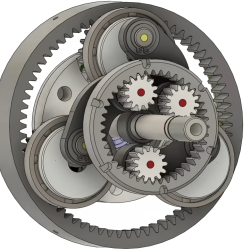Having a good set of (working) headlights is a crucial feature of any motor vehicle, assuming you want to be able to see the road ahead of you when there’s a lack of sunshine. Headlights are also essential to be noticed by other cars and traffic participants, but if installed improperly they can end up blinding an opposing driver with potentially fatal results. This is a major worry with LED lamps that are increasingly being installed in cars, often replacing the old-style halogen bulbs that have a very different color spectrum and beam patterns, to the dismay of fellow road participants.
This headlight glare can also be simulated in driving simulators, as in a 2019 article by [B.C. Haycock] et al. where the effect is of course diminished because displays can only get so bright. Of note is that it’s not just LED lights themselves, but also taller vehicles and misaligned headlights, all of which makes it important that the angle of your car’s headlights is proper. You want to see the road in front of you, after all, not illuminate every house in the nearest settlement two klicks away.
Continue reading “Blinded By The Light: The Problem With LED Headlights”




















